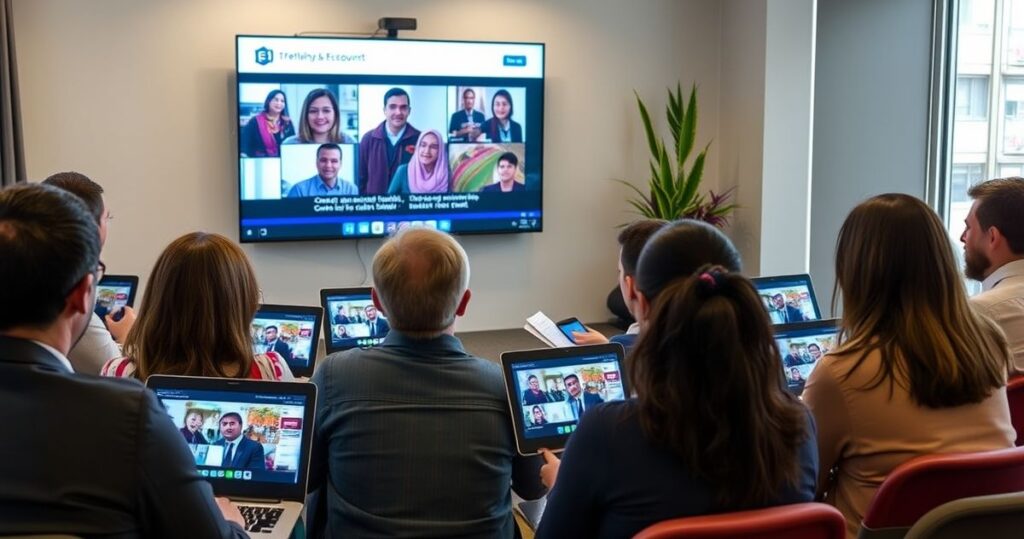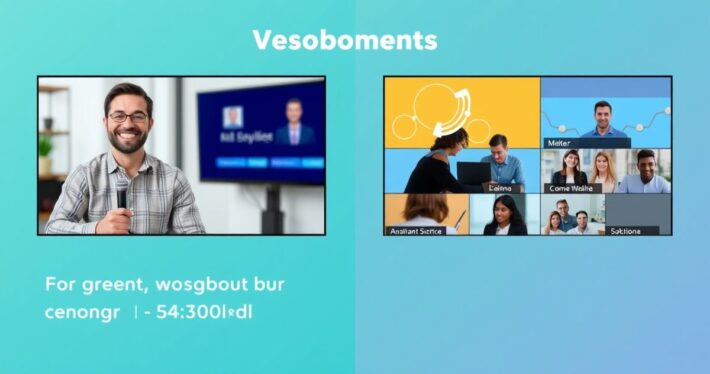Adapting webinar content to resonate with global audiences.

Adapting Webinar Content to Resonate with Global Audiences
Webinars have become a cornerstone of digital marketing, but when your audience spans the globe, creating content that resonates across cultures, languages, and time zones becomes a unique challenge. The key to success lies in understanding your audience, leveraging technology, and crafting messages that feel personal and relevant—no matter where your viewers are tuning in from.
Think of it this way: a webinar isn’t just a presentation; it’s a conversation. And just like any conversation, it needs to adapt to the person (or people) you’re speaking to. Whether you’re addressing a tech-savvy audience in Berlin, a group of entrepreneurs in Mumbai, or a team of marketers in São Paulo, your content must be culturally sensitive, linguistically accessible, and strategically timed.
In this article, we’ll explore practical strategies for adapting webinar content to global audiences, from cultural nuances to time zone optimization. We’ll also dive into how AI-powered tools can streamline the process and help you create webinars that convert, no matter where your audience is located.
Understanding Cultural Nuances
One of the most critical aspects of global webinar content is understanding cultural differences. What works in one region might fall flat—or even offend—in another. For example, humor can be a powerful tool in webinars, but jokes that land in the U.S. might not translate well in Japan. Similarly, color psychology varies across cultures; while white symbolizes purity in Western countries, it’s associated with mourning in some Asian cultures.
Here’s a real-world example: A global SaaS company wanted to promote a new feature through a webinar series. Their original content featured fast-paced, data-driven presentations that were a hit in North America. However, when they launched in Europe, they noticed lower engagement. After analyzing feedback, they discovered that European audiences preferred a more narrative-driven approach with case studies and storytelling. By adapting their content, they saw a 30% increase in attendance and engagement.
Language and Localization
Language is another crucial factor. While English is often considered the lingua franca of business, not everyone is comfortable consuming content in their second (or third) language. Imagine trying to follow a technical webinar in a language you’re not fluent in—it’s frustrating, right?
Localization goes beyond translation; it’s about making your content feel native to the audience. This includes:
- Using region-specific terminology (e.g., “elevator pitch” in the U.S. vs. “lift pitch” in the U.K.)
- Adjusting date and time formats (e.g., 10/12/2023 could mean October 12th in the U.S. or December 10th in Europe)
- Incorporating local examples and case studies
AI-powered tools can simplify this process. For instance, AI-generated subtitles and real-time translation features can make your webinar accessible to non-native speakers. Additionally, tools like the Slide Outline Creator can help you structure content that’s easily adaptable to different languages and regions.
Time Zone Optimization
Let’s be honest: timing is everything. Hosting a webinar at 2 p.m. EST might be perfect for your New York audience, but it’s the middle of the night in Sydney. To maximize attendance, consider:
- Offering multiple time slots for key regions
- Recording live sessions and simultaneously hosting them on demand
- Using scheduling tools to find the best times for global audiences
A mid-sized e-commerce company I worked with saw a 50% increase in international attendance by offering three time slots for their product launch webinar. They also used AI analytics to identify the most popular times for each region, ensuring maximum reach.
Adapting Offers and Guarantees
Your webinar’s offer—whether it’s a product, service, or free trial—needs to resonate with global audiences too. Pricing structures, payment methods, and even the perception of value can vary widely.
For example, a webinar targeting Indian audiences might emphasize affordability and flexible payment plans, while a U.S. audience might respond better to premium pricing with added bonuses. Tools like the Webinar Offer Builder can help you structure offers that feel tailor-made for each region.
Risk-reversal strategies also play a role. In some cultures, money-back guarantees are expected, while in others, they might be seen as a lack of confidence. The Guarantee Generator tool can help you craft guarantees that make saying “yes” a no-brainer for any audience.
Leveraging AI Tools for Global Webinars
Here’s where things get exciting. AI-powered webinar tools can take your global content strategy to the next level. Let’s break it down:
- Slide Outline Creator: Ensure your content balances education and engagement, no matter where it’s being viewed.
- Webinar Offer Builder: Structure pricing and value stacks that resonate with regional preferences.
- High-Value Bonus Brainstormer: Generate bonuses that feel exclusive and relevant to each audience.
- Risk-Reversal/Guarantee Generator: Craft guarantees that make your offer irresistible, regardless of cultural differences.
For instance, an AI tool can analyze cultural preferences and suggest bonus ideas that align with local customs. Imagine offering a free consultation as a bonus in the U.S. and a free e-book in France—small tweaks that can make a big difference.
Common Challenges and How to Overcome Them
Adapting webinar content for global audiences isn’t without its hurdles. Here are a few challenges and solutions:
- Cultural Missteps: Research and test your content with local focus groups before launching.
- Language Barriers: Invest in professional localization services or AI translation tools.
- Timing Conflicts: Use analytics to identify the best times for each region and offer multiple sessions.
- Offer Misfires: Use A/B testing to refine pricing and bonuses for different audiences.
Final Thoughts
Adapting webinar content for global audiences is both an art and a science. It requires a deep understanding of cultural nuances, meticulous attention to detail, and the right tools to streamline the process. But when done correctly, it can open doors to new markets, drive engagement, and boost conversions on a global scale.
So, ask yourself: Is your webinar content ready to go global? If not, it’s time to start adapting.



